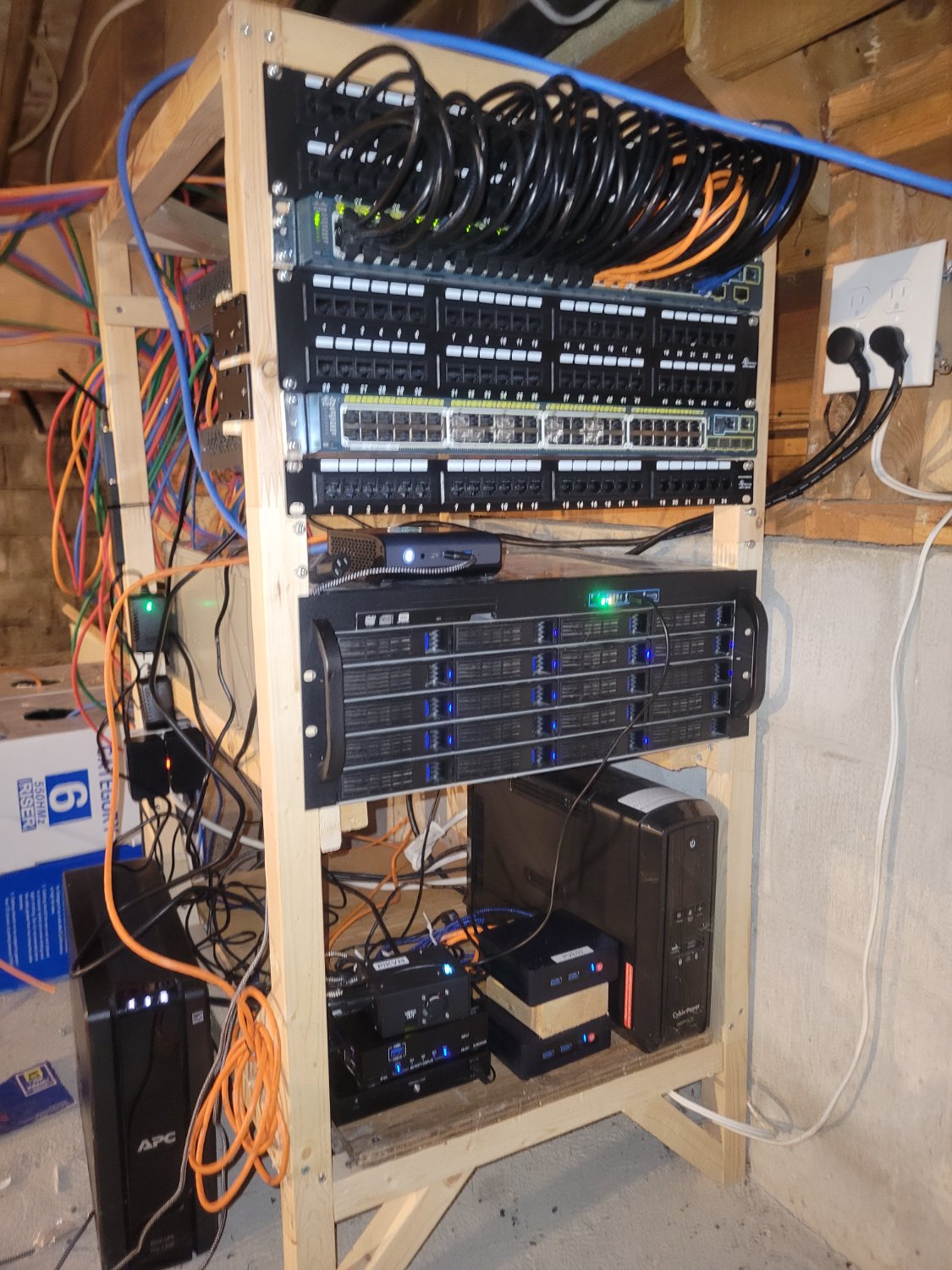

Really I think we are going to see an increase in jellyfin uptake given the changes which is great for that project


Really I think we are going to see an increase in jellyfin uptake given the changes which is great for that project


But if you don’t already have lifetime and are paying monthly or annually then that price is also almost doubling
If you go with your option A, you could virtualize the windows install and run it inside of the truenas or other os using qemu.
You would still need to have enough drives for a new array, but that was always going to be the situation


It’s just from my phone. I have all the notifications off from the original app
Proxmox backup server is my jam, great first party deduplicated incremental backups. You can also spin up more than 1 and sync between them


Once in a while discord signs me out and I have to do a bunch of extra sign-in steps on the official client. But otherwise I have discord, WhatsApp, Google voice, Google chat, Google messages (sms), Facebook, telegram, signal.
All the mautrix bridges are will made and robust


So, one thing that’s not clear here. Is the server and your desktop both at the same location? If they are I see no reason why you couldn’t just leave all the files on the server, have an NFS or Samba share then just stop it on the server and start it (over the network share) on your desktop. It would be functionally seamless, would require no effort to keep the files in sync, and would ensure your running things in the box you want.
Ha indeed, every room in the house is getting 2 faceplates (on roughly opposite sides of the room) with 4 Ethernet that runs each back to the server rack. Is every room having 8 runs right back to the switch excessive, you bet.
In my old place I had one faceplate with 2 ethernet, coax and phone to each room, but phone and coax is useless and I didn’t have enough Ethernet.

Top to Bottom:
Bottom area:
The access to the crawlspace isn’t great so the CrapRack tm had to be assembled in the crawlspace.


Obligatory if you install HA on a raspberry Pi. Use the SSD option as you will wear out an SD card or usb key pretty quickly since those devices aren’t intended for constant writes from things like logging and generally don’t have any wear out leveling.
I don’t know how slow the old one was, but if I send myself an SMS using the bridge it completes a round trip to the Telco and back in about 1 second
Have you tried the new SMS bridge that relies on gmessages?
https://github.com/mautrix/gmessages
If you have an Android phone you can use the Google SMS app:
https://play.google.com/store/apps/details?id=com.google.android.apps.messaging
Then you pair the app and bridge. It’s been pretty reliable since I started using this bridge, especially when compared to the previous bridge options.


I have a FreePBX virtual machine hosted at home. I use VoIP.ms which covers most North American numbers and many numbers abroad. I use it to provide phone service to my parents house and cottage and my house and cottage. I put in about $40 a year to cover all these places with their own DID number.


Might I suggest Fast Reverse Proxy ( https://github.com/fatedier/frp )
It’s a great solution if you don’t have a public IP or can’t/don’t want to open any ports.
I found it super easy to setup and configure. I put caddy in front of the server side for mine to ssl offload there. But you could also route everything down the tunnel it makes and use a local reverse proxy to handle SSL offloading


I also use .lan I used to use .local for years until I started to have conflict issues with .local resolution on Android when they started using mdns


Sonarr and Radarr need to have the directories be the same as your torrent client and newsreader.
Sonarr/Radarr read the. Directory that the API reports as the save destination and moves it from there
Depending on what services you want to give access with, I have had great luck with an ultra cheap VPS
https://lowendbox.com/blog/1-vps-1-usd-vps-per-month/
Then I host my edge services on a container and use an ssh tunnel to the remote host which gives me an ipv4 and any port forward that I want.
For example I have my reverse proxy inside my network and my VPN server then I use a command like:
ssh -R 8080:localhost:80 public.example.com
Which would forward publicip:8080 to localhost:80
Read more here: https://www.ssh.com/academy/ssh/tunneling-example.
I use autossh to keep the tunnel alive at all times.
https://www.harding.motd.ca/autossh/
This is an ultra cheap way to get any ports you want and self host the whole thing. The remote VPS also doesn’t get any extra access to your local network and doesn’t initiate the connection so it doesn’t have credentials for your local network